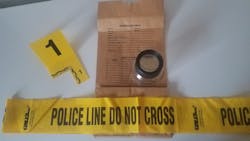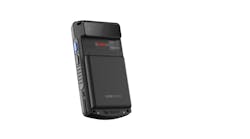Fingerprints play a large role in convictions. Lately, DNA evidence has been in the limelight when it comes to identifying (and eliminating) suspects and victims alike. Rightly so, DNA evidence has immeasurable value, but so does fingerprint evidence.
We all know each fingerprint is unique. Not only does each one have a pattern but they also each have other characteristics that serve as a “map” to identifying the print.
Collecting prints is not anything like it is on television. The portrayal is accurate but the execution and results are far different in real life. This being said, at crime scenes it is often easy to overlook latent fingerprints. However, it is crucial that if there are (logical) places where prints could be, you need to process that area and try to collect any prints that you can.
Commonly Overlooked Places to Find Prints
Often investigators will focus on the latent prints that are visible or obvious. However there are other surfaces that have prints such as paper, cardboard, and tape. Is it easy to lift prints on these surfaces? By no means is it ever easy. Is it worth it? Yes, it is certainly worth it. Many times these surfaces will have some of the best and most prominent fingerprints.
Processing these materials is sensitive and if you don’t know how to do it, bag it and let someone who does know process it. Many times this type of work will seem unnecessary and tedious. But going that extra mile can often make your case even tighter. Don’t settle for the visible print that is on the door of the house that was broken into. (those are often victims’ prints anyway) If something looks out of place or moved, chances are you’re right. Go with your intuition and collect those extra pieces of evidence.
Fingerprints on Paper
Surprisingly, I have found many, useable prints on paper. Can you dust those surfaces with standard fingerprint powder? Sometimes, but paper is best sprayed with Ninhydrin. Ninhydrin is a chemical that sticks to certain surfaces, it will turn purple if it happens to adhere to oils such as fingerprints. Once you find that you have prints using this method, photograph and submit them to the crime lab or an in house fingerprint analyst. The sooner the better for analyzing these prints.
Checking on paper for fingerprints is overlooked many times. However, there have been murder cases that were solved because of a latent print or palm print found on a sheet of paper.
Don’t overlook the little things, they could turn into big results.



